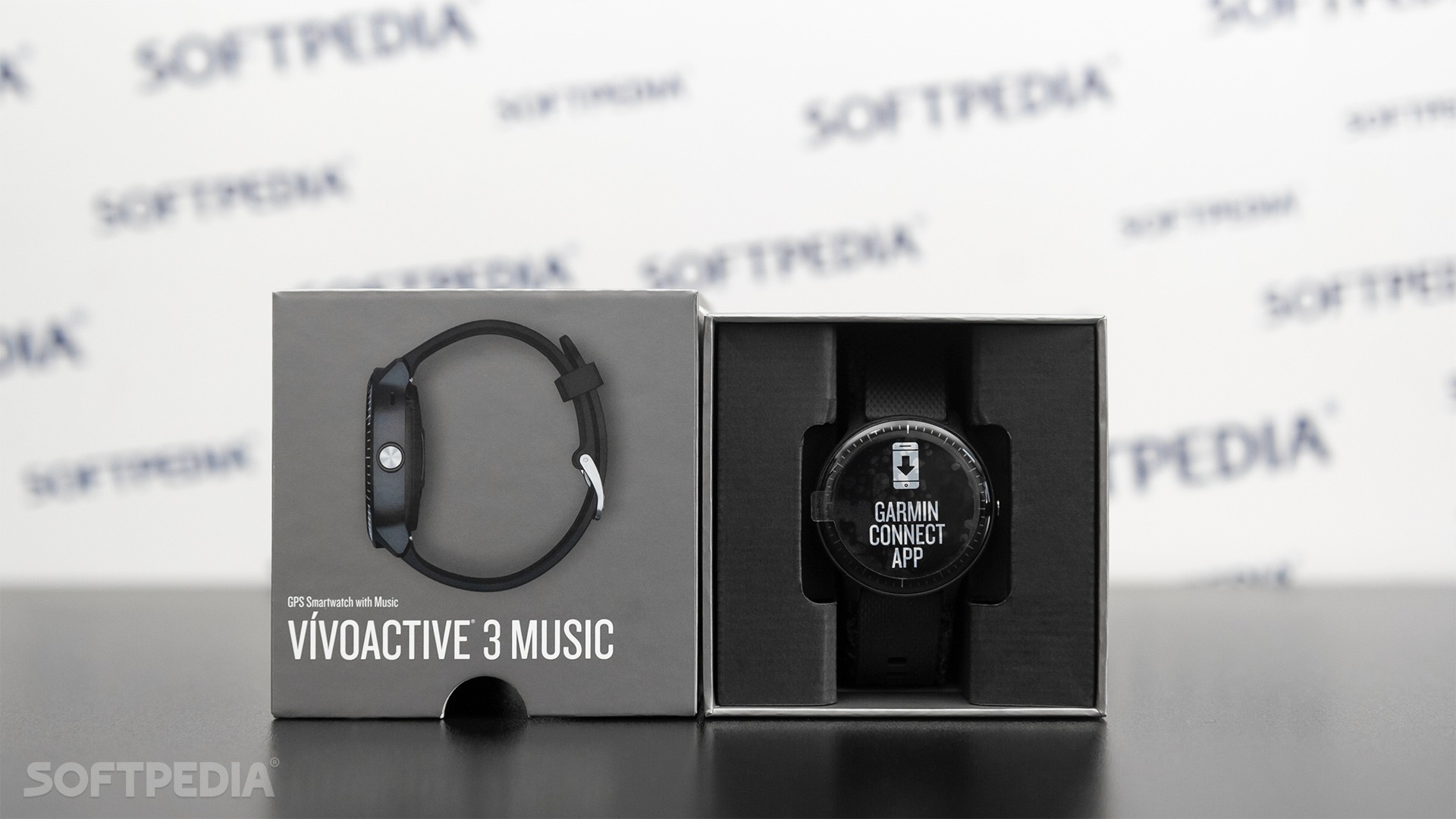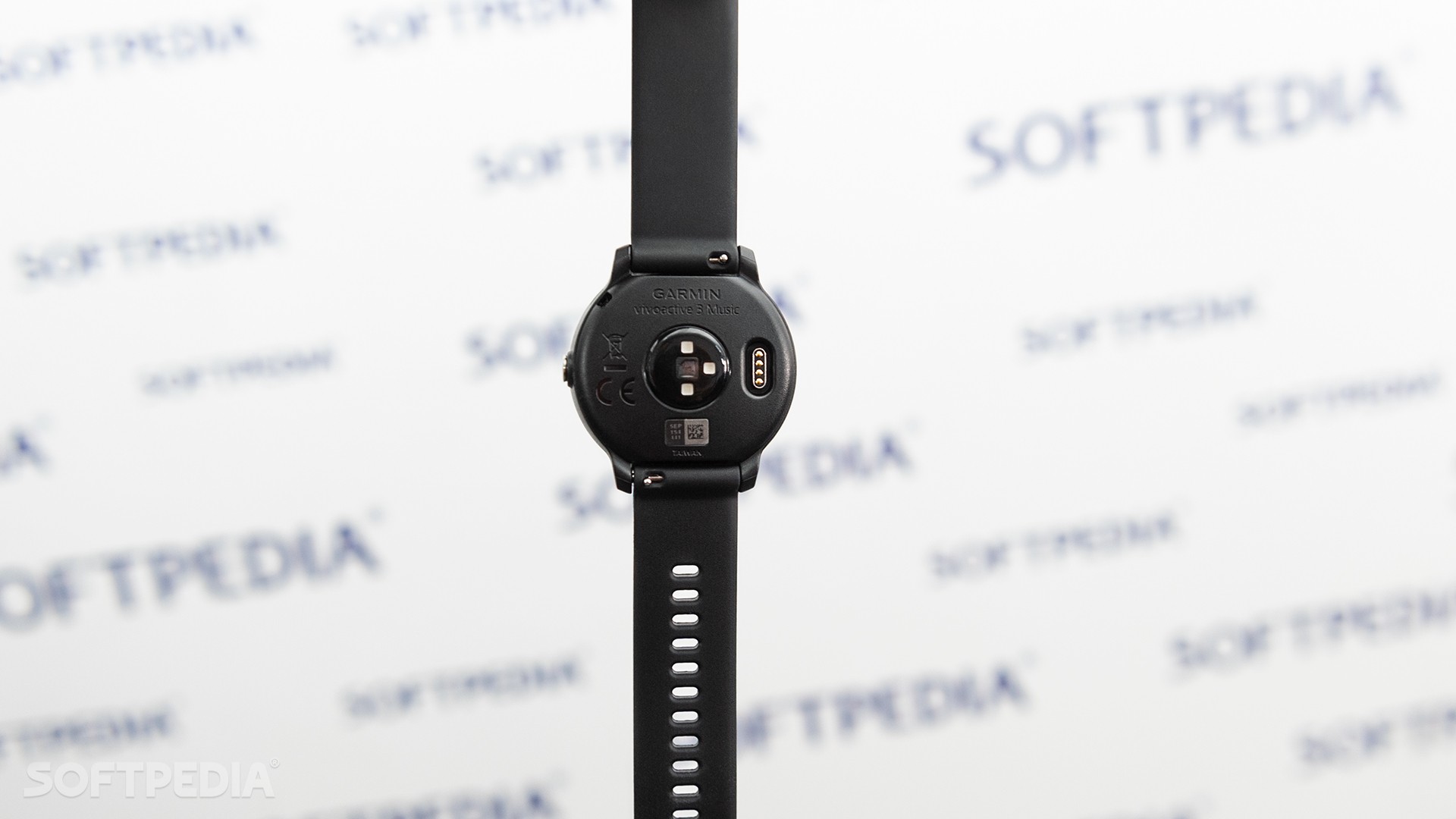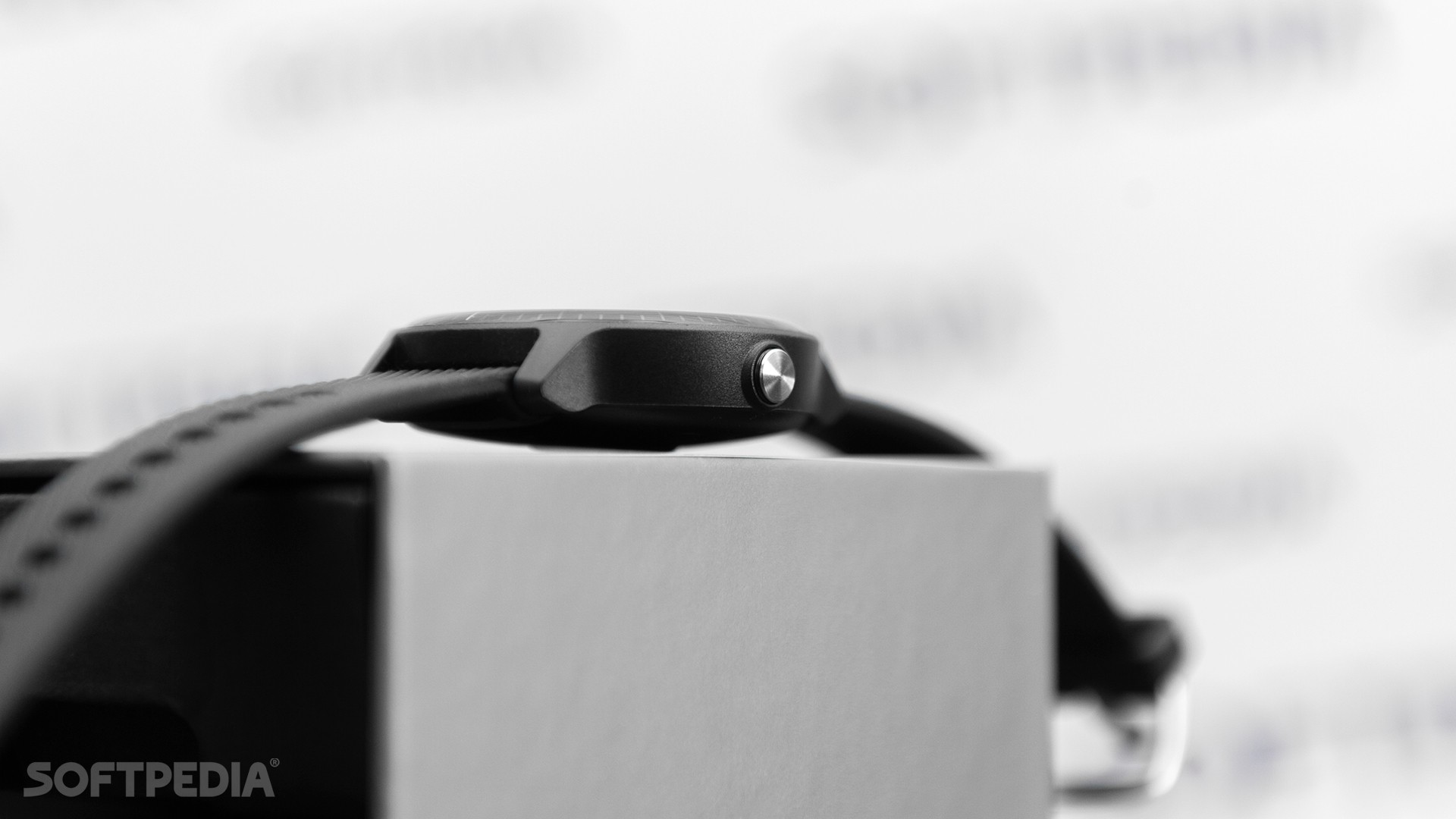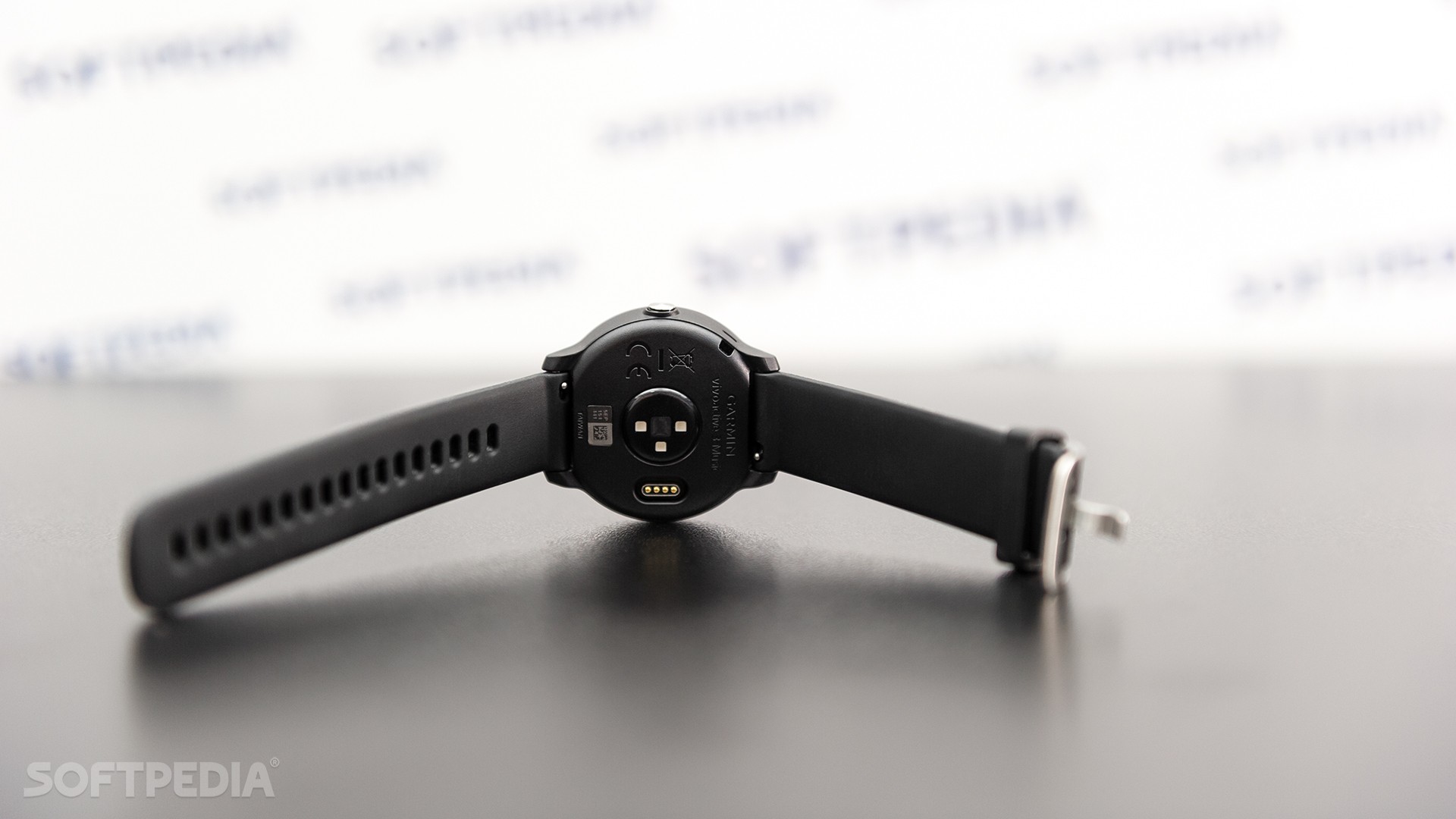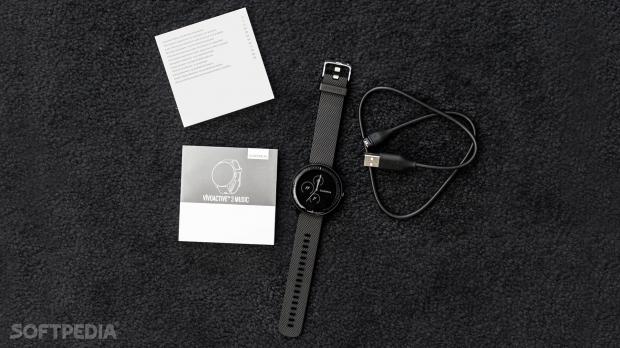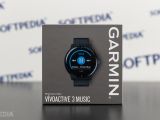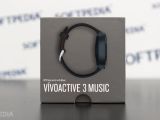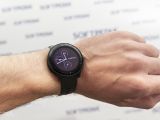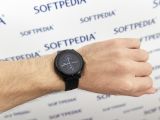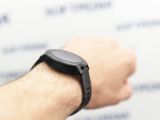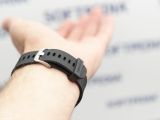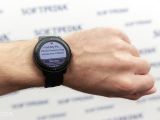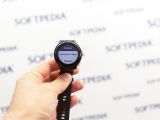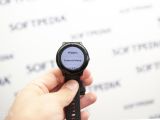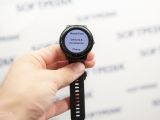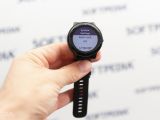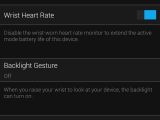In a world dominated by the Apple Watch, devices from other manufacturers rarely make the headlines, no matter how good they are.
If you ask me, this is rather unfair, especially because there are companies out there that have a longer history than Apple in areas that are being tackled by the Apple Watch too, including here activity tracking.
Garmin is one of the top names here, as its fitness tracking gear is currently among the best you can get. And because the wearable industry is becoming fully-focused on smartwatches, Garmin has no other option than to steer its efforts towards such products too.
The Vivoactive 3 Music is a device that tries to combine the heritage of the company in terms of activity tracking with modern-day features like notification support, all with a little extra granted by the Music tag in its name.
At first glance, there’s not much to criticize. The Vivoactive 3 looks like a watch, it feels like a watch, and I truly love that.
Most smartwatches come with bulky designs that are very often the result of their manufacturers’ struggle to embed as many sensors as possible. Of course, I’m not talking about the Apple Watch here, but there are companies out there that compromise the design of their products just to offer as many features as possible, and as far as I’m concerned, this is by no means the correct approach.
One such example was the Microsoft Band, which felt rather uncomfortable, though everybody knows it was one of the most capable activity trackers on the market.
The Garmin Vivoactive 3 Music, however, is totally different. At just 39 grams, it feels super light on the wrist, and despite using polymer for the case, it doesn’t look cheap at all. On the other hand, the 1.2-inch screen looks a bit fragile, yet Garmin says it uses chemically strengthened glass to protect it.
Certainly, super-tough protection is absolutely mandatory on a device whose main activity is fitness tracking, but I’m not sure about the materials used on the Garmin. No matter what the company says, it feels easy to scratch and break, and during my two weeks with the Vivoactive 3, I had to pay attention not to hit any hard objects just because I was afraid the watch could be damaged.
On the other hand, judging from the other Garmin smartwatches I tested, like the Fenix 5s, durability shouldn’t be an issue, though something tells me it’s better not to put the Vivoactive 3 to such tests.
Regardless of this, what I like the most is that you can hardly tell it’s not a classic watch, and even the choice of materials plays a key role in this. Of course, a more exquisite look would have been great, but as we learned the hard way (thanks, Apple!), quality comes at a cost. A huge cost, in some cases.
“A smartwatch that looks like a watch? Whoa!”
While in terms of design there’s almost nothing to hold you back from getting a Garmin Vivoactive 3 Music, things change when firing up the device.
In typical Garmin style, the quality of the 1.2-inch display leaves a lot to be desired, especially regarding resolution, which on this model is 240x240 pixels. Garmin says it uses a sunlight-visible, transflective memory-in-pixel (MIP) display.
In pure English, this means that while the quality of the display doesn’t match the one of the Apple Watch, for instance, it’ll be easily visible in direct sunlight and offer great battery life.
Personally, I’m ready for this trade-off 24/7. Battery life is the most important thing for me, and it is one of the reasons I gave up on using smartwatches like the Apple Watch and the Samsung Galaxy Watch. Both are great devices, but recharging one more device every day is something I just don’t want to do.
The Vivoactive 3 Music is impressive in this regard. Battery life exceeds 5 days on average, and even if you go for a run every day with GPS on, you should still get at least 3 days per charge. And as far as the fast charging is concerned, it doesn’t take more than an hour, and this is without a doubt something impressive. You get continuous tracking with nearly zero interruptions.
As compared to the Apple Watch and the Samsung Galaxy Watch, Garmin’s Vivoactive 3 Music doesn’t come with a dock for charging, but with its own proprietary cable, so it’s easier to carry around. Of course, I’d prefer a standard Type-C cable or even microUSB cable at any time, but for now, it’s still a more convenient choice than in the case of other smartwatches.
Getting back to the display, one big advantage of the Vivoactive 3 Music is that it comes with a touch screen. One of the things I criticized about the Fenix 5s, which I absolutely loved as a whole, was its navigation system based on side buttons. That model lacked a touch screen, so you had to click, go back, and launch home using buttons on the side. This was pretty confusing until you managed to get used to each button, and even beyond this point I still pressed the wrong button every once in a while.
This is no longer the case on this new device, though a side button continues to be available as well. However, its purpose is to let you start and stop workouts, as all the other things can be done with a simple tap on the screen.
“Touch input. Finally!”
Vivoactive 3 Music is a feature-packed device, and the lineup of sensors is absolutely impressive: GPS, GLONASS, wrist heart rate monitor, barometric altimeter, compass, gyroscope, accelerometer, and even a thermometer.
Thanks to this arsenal, it can track pretty much anything, including here steps, calories burned, floors climbed, distance traveled, intensity minutes, stress, and even provide you with extra statistics like fitness age within the mobile app. Sleep monitoring is available as well, and it works similarly to the one on Fitbit devices, showing total sleep and periods of movement and restful sleep.
Wearing the Garmin to bed is an easy thing to do just because it’s so comfortable on the wrist, and unless you’re a night wrestler, you’re safe.
The Vivoactive 3 Music is first and foremost an activity tracker, and the number of workouts it can track is impressive, to say the least. It starts with the typical lineup, like running, treadmill, indoor track, bike, floor climb, pool swim, strength, cardio, elliptical, and stair stepper, and continues with less common activities such as row, row indoor, navigate, golf, ski, snowboard, yoga, and XC ski. If your preferred workout isn’t here, no problem. You can create your own profile and set up activity tracking using a customized workout.
This is something Garmin has always excelled at, and it is one of the reasons the company is super-popular among professional athletes and those who want a truly advanced fitness activity tracker on their wrist.
Each workout comes with quite a pack of options, like swimming for instance. The default swimming profile (which you can further customize with even more stats!) offers pool swim metrics, like lengths, distance, pace, stroke count, and calories, but it can also detect strokes. It supports freestyle, backstroke, breaststroke, and butterfly. And when you’re done, it shows what Garmin calls SWOLF, which is a metric for determining how efficient your swimming session has been.
This is exactly what Garmin is good at, and if you’re looking at other smartwatches on the market, it’s pretty difficult to find such advanced capabilities. And the best of all is that it’s not limited to just one activity. You also get super-detailed stats for a lot of other activities, like golfing and cycling.
Each workout profile can be configured to match your profile, the fitness equipment or gym gear you use, but also to align with your training, planning, and analysis routine. There are customizable alerts, as well as downloadable training plans from professional athletes to help you reach your goal.
“Any workout. ANY!”
If your main concern is data accuracy, it shouldn’t actually be a concern. Sensors appear to have a high accuracy, and statistics come in line with the details provided by other devices focused on activity tracking, like Fitbit. What I noticed, however, is that the Vivoactive 3 Music needs some time to update the stats and the tracking doesn’t really take place in real-time, so a few seconds may be needed before you are able to see your current heart rate or step count.
I think this is something that’s related to battery life, as real-time updating would have a bigger impact on battery. However, the provided data appears to refresh faster when working out, so if you’re running, walking, or cycling, you should see numbers that are relevant to any second during the workout.
If after reading all of these you think the Vivoactive 3 Music is a device that’s only aimed at those who have made fitness tracking a priority, this is not the case. This smartwatch is supposed to encourage everyone work out more, and a living proof in this regard is the daily step goal.
When setting up the watch and your profile in the Garmin mobile app, you’re provided with an average step goal for your profile, most often 7,500 steps per day. If you’re not able to meet this goal several days in a row, the Vivoactive 3 then reduces the target to 3,500 steps per day. If you manage to reach it at least once, the goal is then increased to 4,120 steps per day, and then gradually to higher targets in order to make you work out more.
All stats are logged into the companion Garmin Connect app on Android and iOS, so you can track how you evolved over time.
When it comes to the smartwatch capabilities, I must admit Garmin has improved substantially in this regard.
Notifications come with options to reply to messages, delete emails, and dismiss them, and they support email clients, instant messengers, and pretty much any notification that lands on your phone. However, text response and reject phone call with text support is only available on Android because we know why (thanks, Apple!).
The Music tag in the device’s name means it comes with storage for up to 500 songs, and you can listen to them while working out. Thanks to Bluetooth support, you can pair the device with Bluetooth headphones and then control playback from the watch.
“Moonwalk. During your walk.”
Just like the majority of smartwatches, there’s a wrist rotation gesture support to turn on the display, but I used it mostly with this feature turned off because the always-on screen is perfectly visible during daytime. At night, you can enable the display by pressing the side button.
The Garmin mobile companion app has evolved a lot, and I think this was absolutely mandatory given that the company wants to expand more in the smartwatch world. There are thousands of faces available, and the amount of customizations offered to users is overwhelming. You can tweak pretty much anything like colors, widgets on the screen, and make each watch face perfectly meet your style.
The Vivoactive 3 Music also lets you access widgets by swiping down on the home screen, and you can configure what info to see here too and change their order. Also, the side button can be pressed twice to access your favorite workouts, while a long press brings up a circular menu with quick access to additional features, like Garmin Pay (which nobody uses), a stopwatch, and do not disturb.
The watch uses a navigation system a la iPhone, and you go back by simply swiping right. A double tap is also supported to wake up the smartwatch, but given the quality of the screen, you actually need to press harder to respond.
With a few small exceptions, I think the Garmin Vivoactive 3 Music is just as advanced as any other premium smartwatch out there, and if you’re using a Fitbit, for instance, you won’t feel like you’re losing anything when making the switch.
The pros
First and foremost, the best thing about the Vivoactive 3 is the battery life. This has become the main concern for me and one of the reasons I’m no longer using an Apple Watch, but with a nearly 7-day battery life, this Garmin model is one of my favorite devices so far.
The display, although lacking in terms of quality, is the best ever in direct sunlight. This is thanks to Garmin using the so-called transflective memory-in-pixel (MIP) technology, which makes the wrist rotation feature unnecessary when using the watch.
The overall classic watch design is my favorite cup of tea, and I’m pretty sure I’m not the only one. Wearables, no matter if they’re smartwatches or activity trackers, need to be comfortable and look good on the wrist, so that they can be worn regardless of the time of day and night and the outfit. Sports bands, for instance, look awkward on the wrist when wearing a suit, and this is the reason why this classic design makes much more sense.
With interchangeable bands, the Vivoactive 3 can match any style, and it would look good on the wrist no matter the outfit.
The smartwatch capabilities are top-notch too, and on Android, you get lots of notification interaction options, including email deletion and replies for messages.
In the end, Garmin Vivoactive 3 Music is a much more advanced mix than the Fitbit Ionic or Versa, for example. Fitbit’s devices are laggy, boast an unsophisticated user interface, and their design and build quality leave a lot to be desired, especially in the case of the Versa. They respond slowly and lack even basic features like doubling as a remote control for the camera.
I think the Vivoactive 3 Music is a better buy right now, though Garmin has more or less lost ground lately. Fitbit remains a top alternative to the Apple Watch, mostly because of its increased focus on smartwatches, but customers should at least give Garmin a shot before deciding on their next purchase.
The cons
If there’s anything that needs to be improved on the Garmin Vivoactive 3 Music, it’s the quality of the screen.
Although it looks perfect in direct sunlight, the screen is clearly optimized for longer battery life, and this compromises graphics, quality, and response times. What I feel that Garmin should do is reach a mix between better screen quality and battery life, and I don’t think anyone would mind having an OLED panel, for instance, and lose a day out of the seven the device can offer per charge.
Also, like the other Garmin models, the Vivoactive 3 Music remains a super-complex device overall. There are too many features in there, and while I just love having them on my wrist, Garmin should find a way to provide more information on how they work and what they mean, so that any type of user should know what they’re important for their own profile.
I understand that Garmin may be aiming for a niche here, but this is an approach that may no longer bring home the bacon at the end of the day. Smartwatches are growing in popularity these days, and targeting a wider audience is the only way to survive in this highly competitive market.
The bottom line
In the end, I think the Garmin Vivoactive 3 Music is the kind of device aimed primarily at athletes and then at smartwatch fans. This is exactly the opposite of the Apple Watch, no matter what Apple says.
Despite the increased focus on activity tracking, the Apple Watch is first and foremost the best companion for an iPhone, so you can have your apps and notifications on the wrist wherever you go.
The Vivoactive 3 Music is a completely different story. With its primary focus clearly on activity tracking, the device can provide an overwhelming amount of info on every step you make, all while also offering a little bit extra like the typical smartwatch capabilities.
Garmin is undoubtedly doing the right thing here, and this device is living proof its evolving and expanding its horizons. There’s still a long way to go before becoming a true competitor in the smartwatch market, but the future certainly looks good.
Sure, Garmin doesn’t rely on marketing as much as others do, but its devices kind of speak for themselves. And with little improvements here and there, the only way sales can go is up.
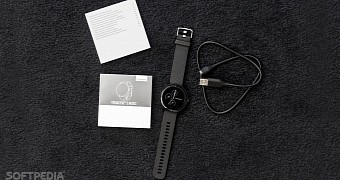
 14 DAY TRIAL //
14 DAY TRIAL // 